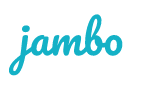
Opciones de compromiso flexibles
Reconozca que la gente tiene vidas muy ocupadas y que las reuniones tradicionales sólo pueden funcionar para algunos.
Puede ofrecer opciones de participación flexibles, como sesiones presenciales y en línea. De este modo, las personas pueden participar cuando más les convenga, lo que las hace más accesibles a un público más amplio. Sin embargo, es importante ofrecer solo algunas oportunidades de participación en línea, ya que las personas pueden carecer del acceso o los conocimientos necesarios para utilizar la tecnología.
Las reuniones deben organizarse a horas convenientes (por ejemplo, no en horario laboral). Podría celebrar las reuniones a distintas horas y en distintos lugares. Además, ¿podría pensar en evitar los periodos vacacionales más populares de la zona?
Lenguas y accesibilidad
Eliminar las barreras lingüísticas y de accesibilidad contribuye a crear un entorno integrador.
Asegúrese de que los materiales y las reuniones estén disponibles en varios idiomas, si es necesario. Tenga en cuenta los problemas literarios de la zona y cómo puede incluir mejor a todo el mundo. Ofrezca subtítulos para las sesiones en línea (u opciones de lenguaje de signos).
Considere la accesibilidad de los edificios donde se celebran las reuniones. Revise si las instalaciones son de difícil acceso para las personas con discapacidad y evite los lugares de difícil acceso para las personas sin medios de transporte.
Genere confianza y supere el miedo.
Generar confianza es un proceso a largo plazo. Los conflictos pasados entre su organización y la comunidad destinataria pueden explicar la escasa participación.
Empiece por reconocer los problemas o preocupaciones del pasado y comprométase a adoptar un enfoque más integrador. Involucrar a los líderes y organizaciones de la comunidad para que den fe de la imparcialidad y transparencia del proceso. Aborde las preocupaciones abiertamente y trabaje para resolverlas, demostrando que se valora y respeta la participación.
Capacitar a los grupos marginados
Reconocer y abordar los desequilibrios de poder que puede conllevar la participación de la comunidad y las partes interesadas.
Las personas pueden carecer de la seguridad o la capacidad para participar en un proceso de compromiso. Las reuniones públicas convencionales pueden resultar abrumadoras para algunas personas.
Busque activamente la opinión de los grupos marginados y proporcióneles recursos y apoyo para ayudarles a participar eficazmente. Esto puede incluir formación, servicios de guardería, ayuda financiera o ayuda para el transporte.
Es esencial eliminar los obstáculos a la participación de la comunidad y las partes interesadas.
Eliminar las barreras a la participación de la comunidad y de las partes interesadas es fundamental para crear procesos de toma de decisiones inclusivos, informados y eficaces.
Comprendiendo y abordando estas barreras, aumentando la concienciación, ofreciendo opciones flexibles de participación y generando confianza, puede fomentar un entorno en el que se escuche y valore la voz de todos.
Adoptar la diversidad y la inclusión en los esfuerzos de compromiso con la comunidad conduce en última instancia a mejores resultados para todas las partes implicadas.








